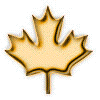Reliable. Dependable. Yours.

Materials Used
Lials
There are simply no limits on the materials that can be used in building a knife – whether mine or yours!!
Sometimes, the hardest part of building a knife is deciding just what to use, choosing the “best” steel for the intended use and that will highlight the design, that will be most effective in the knife’s performance.
A bit about each factor is below.
Steel
My personal preference is stainless steels – they hold an edge very well, are easy to sharpen and resist staining and rusting that high-carbon steels will exhibit. They ar perfect for hard use, then being thrown in a pack of kit bag and forgotten (of course any steel will tarnish if put away wet or covered in gunk, so at least wipe the blade dry).
Stainless steels vary from 1/16 (fishing knives( to 1/4 (Bowies), and vary to customers planned uses.
440C – the most commonly used knife steel. Holds edges well, easy to sharpen, takes a nice mirror polish
154CM – some say the best all-round knife steel (I didn’t say this, Bob Loveless did)
CPM154 – the same steel as 154CM, but made quite differently, resulting in a lovely mirror finish
CPM S30V – made specifically for the knife craft – beautiful when satin finished
STAINLESS DAMASCUS – for that really special look – there is nothing like a nice blade in ladder-pattern stainless Damascus – just says something about the user.
CARBON DAMASCUS – just as nice, and made by hand in the forging process. Forgers like Brad Vice (Alabama) and Robert Eggerling (PA) are masters at their trade. Art knives and high-end folders often feature this wonderful steel (and command lost of $$$$).
Blade finish – my personal preference is a hand-rubbed stain finish, but a polished blade looks just great when the bolster/guard is also polished. Your choice.
Handle Materials
Materials vary with the knife, and customers sometimes request a specific material.
Natural woods like desert ironwood, paduak, cocbolo and bubinga are favorites (these are treated by a “secret” mix of lemon oil and beeswax – wow!).
Many hard working knives are handled in Dymonwood, or micarta – both are resin impregnated wood or canvas layers, and are as hard as the steel – they won’t be dented through hard use. These coma in an variety of colours.
And of course, antler (red deer, Sambar stag), horn (water buffalo), or bone (camel, giraffe or cow) all add a special look and touch to a blade.
Think of the handle as an opportunity to customize your knife – it will make it unique.
If you are thinking of having a knife made just for you (no extra cost) then why not specify YOUR choice of handle?
Sheaths
Most of my sheaths are made form 8-9 oz. shoulder, vegetable tanned (to allow for tooling). Each sheath is made ONLY for the knife that is held in it – wet formed and designed to hold the knife securely. Each features a welt, to protect the stitching.
All sheaths are hand stitched with waxed thread, coated inside and out with Neetsfoot oil, and further protected with a beeswax mix. Both the oil and beeswax are hand rubbed for a deep lustre. A quick wipe with a damp cloth and occasional bit of any kind of leather protector will keep the sheath looking new for years.
By the way, it is not a good practice to store your knife IN the sheath – take it out and store it separately. Any brass, or high carbon steel will stain if left in a damp sheath.
Having said that, sometimes a Kydex sheath best fits the knife or the desired carry method – in which case I can provide hard sheathes in Kydex or Concealex.
Guards and Bolsters, Pins and Bolts
Sometimes, a knife just needs to be plain and simple – no guard or bolster – clean and effective. But brass or stainless steel guards and bolsters (or even G10 or Desert Ironwood, depending on the handle material) just makes that knife look like it wants to be held.
And for a nice touch, coloured spacer material on the handle or guard is perfect! Mosaic pins add a distinctive touch – I reallly like the look!